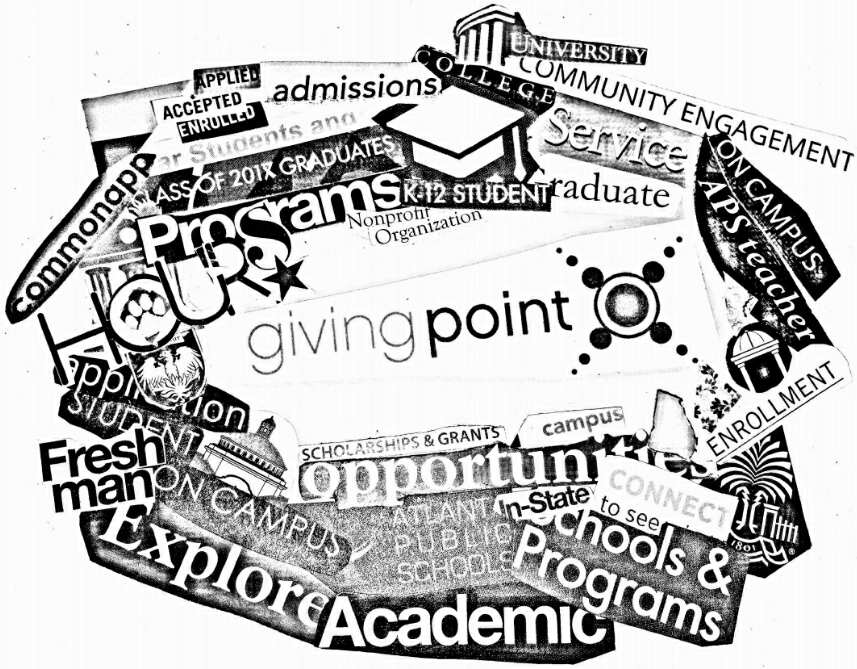Giving Point redefines how to log service hours
October 6, 2017
Giving Point is giving students headaches. The organization runs a website for logging community service hours, and Grady made its use mandatory for all students to fulfill their community service graduation requirement.
Giving Point is meant to increase the efficiency and ease of logging community service hours. It has been available for Grady students since 2014, but has only this year become a requirement. Students previously used paper service logs to record their mandatory 75 hours of community service.
Students debate whether the website is more or less efficient than the old method of recording hours on paper.
The club 21st Century Leaders organizes volunteer opportunities for students and offers tutorials after school to bring students up to speed on the website, said the club’s teacher adviser, Mary Van Atta.
“There are a couple of things in Giving Point that can be confusing for students and can keep advisors from being able to verify the hours if [they] are entered incorrectly,” Van Atta said.
Some students have difficulty using the website and experience problems like lost contact information, which is needed to verify the hours. Without that information, hours are often difficult to recover, which is worrisome for some seniors.
“As a senior, the fact that we have to use Giving Point is very frustrating because we are having to communicate with people that we volunteered with freshman year,” said 21st Century Leaders executive board member Campbell Pair. “I had to send many emails explaining that Grady is changing their policy, and I need them [organizations Pair has volunteered with] to re-approve the hours.”
To log old service hours into the website, students need access to information written on the community service sheets they used prior to the implementation of Giving Point. Keeping track of those sheets of paper presented its own set of problems.
“When you get a piece of paper as a freshman and you’re told to hold on to it and turn it in when you’re a senior, [it] always gets lost,” Giving Point Director of Community Outreach Nyaboke Machini said. “Giving Point takes care of that.”
Many students favor the website’s ability to keep track of community service hours digitally because they find it more convenient.
“I like using Giving Point for the community service I’ve done because I don’t have to worry about getting signatures or keeping track of all that paper,” senior Ali Bouterse said. “It is nice to know that all I have to do is print out my hours and hand them to my counselor.”
Students who have done independent projects that are not connected to an organized nonprofit can still get their hours legitimized through Giving Point, which was something many students were concerned they would not be able to do. Any adult who supervised a student doing volunteer work can provide their contact information in order for Giving Point to verify service hours that the student completed.
“Doing community service independently can count as long as some adult can verify that you completed the work,” Machini said. “We verify hours with the nonprofit that the student worked with, so that makes it one less step for [counselors].”
The Giving Point staff verifies all of the service hours, which was previously the counselors’ job.
Oftentimes, many of the old service logs were lost and counselors had to reprint new ones, wasting time and paper.
“We are entering an age where everything is digitally recorded,” counselor Lamar Young said. “You’re not going to see a wave to go back to paper because of the environmental issues. [Giving Point] is an easy, clean way for us to manage high volumes of information.”
In addition to allowing students to better record their service hours, Giving Point helps them find and create new community service opportunities. During the process of creating an account, Giving Point gauges the student’s interest in community service opportunities and provides information about them.
“We meet with students to help them find resources for something they want to work on in the community and build relationships with schools and nonprofits to introduce the Giving Point online platform,” Machini said. “A lot of nonprofits need somebody who is out in the community trying to find people we can serve.”
Giving Point is attempting to spread to schools within Atlanta Public Schools and other districts, including international schools.
“[We] have been working directly with APS to come to an understanding that we want all the high schools to use Giving Point,” Machini said.






